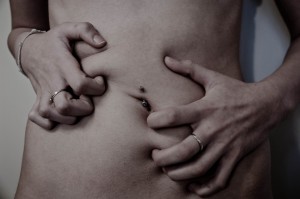Bulimia Nervosa- An Eating disorder
Bulimia Nervosa is an eating disorder. It is basically a sporadic uncontrolled ingestion of large quantities of food followed by recurrent inappropriate compensatory behaviour to prevent weight gain such as self induced vomiting, diuretic or cathartic use, strict dieting or vigorous exercise.
Similar to Anorexia Nervosa, this disorder also predominantly effects young women belonging to middle and upper socio economic strata
Diagnosis
Bulimia nervosa is very difficult to detect. The prevalence of this disorder can be as high as 19% on college going women.
Body weight of women suffering from Bulimia Nervosa may fluctuate but generally is within 20% of the desirable weight.
People suffering from this disorder exhibit the following characteristics:-
- Uncontrolled episodes of binge eating at least twice weekly for 3 months
- Recurrent inappropriate compensation to prevent weight gain such as self inducted vomiting, laxatives, diuretics, fasting or excessive exercise.
- Over concern with weight and body shape
Clinical Findings
Patients with Bulimia Nervosa typically consume large quantities of easily ingested high calorie foods and, that too- usually in secrecy. Certain patients may have certain such episodes everyday for a few days while some may report regular and persistent patterns of binge eating.
Binging is largely followed by vomiting, diuretics etc and is usually accompanied by feelings of guilt or depression. Periods of binging may be followed by intervals of self imposed starvation.
Some patients of bulimia nervosa may have a cryptic from of Anorexia nervosa with significant weight loss and amenorrhea (absence of menstruation/periods).
Bulimics have a higher incidence of pre-morbid obesity and more impulsive and antisocial behaviour.
Medical complications
 Gastric dilatation (overstretched stomach) and pancreatitis (Inflammation of the pancreas) have been reported after binges.
Gastric dilatation (overstretched stomach) and pancreatitis (Inflammation of the pancreas) have been reported after binges.
Vomiting can result in poor dentition (teeth arrangement), pharyngitis (sore throat), esophagitis (inflammation of food pipe), aspiration (accidently sucking of food particles into lungs), and electrolyte abnormalities.
Cathartic and diuretic abuse also cause electrolyte abnormalities and dehydration. Additionally constipation and hemorrhoids (piles) are common.
Treatment
Treatment of Builimia nervosa and Bulimarexia requires supportive care and psychotherapy. Antidepressant medicines maybe helpful. Though death is rare but long term psychiatric prognosis is worse than that in anorexia nervosa.
Key Takeouts
| Essentials of diagnosis | Uncontrolled binge eating for at least twice weekly for 3 month |
| Compensation of binge eating through unnatural methods for avoiding weight gain. Resorting to vomiting, starvation, excessive exercise, laxatives, diuretics for food elimination. | |
| Tendency to effect | The female gender |
| Socio economic strata | Middle to upper class |
| Age | Occurs largely in adolescents and young adults |
| Behavioural characteristics | Impulsive and antisocial behaviour |
| Depressive and prone to anxiety |

